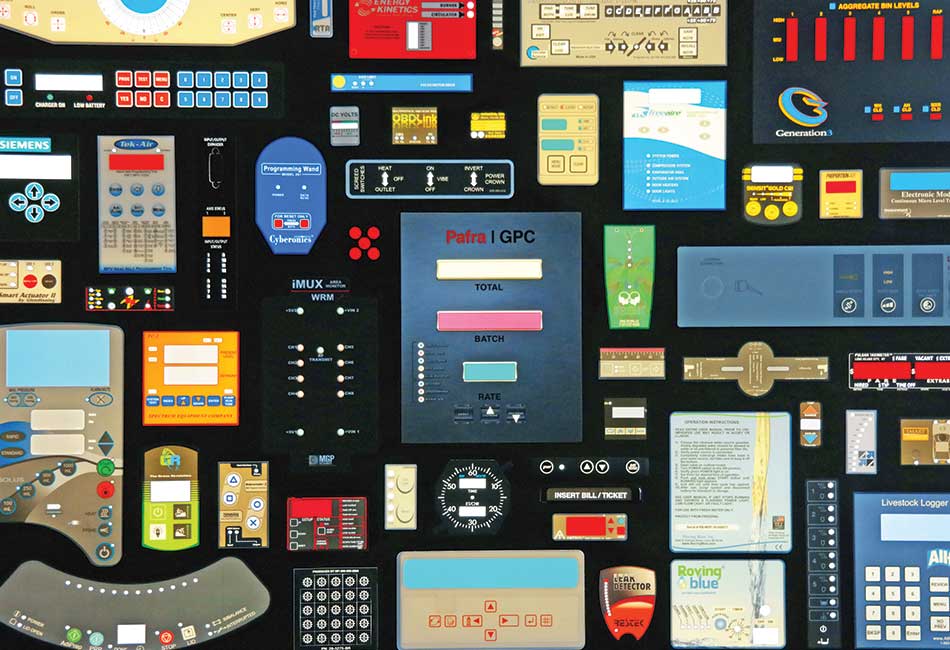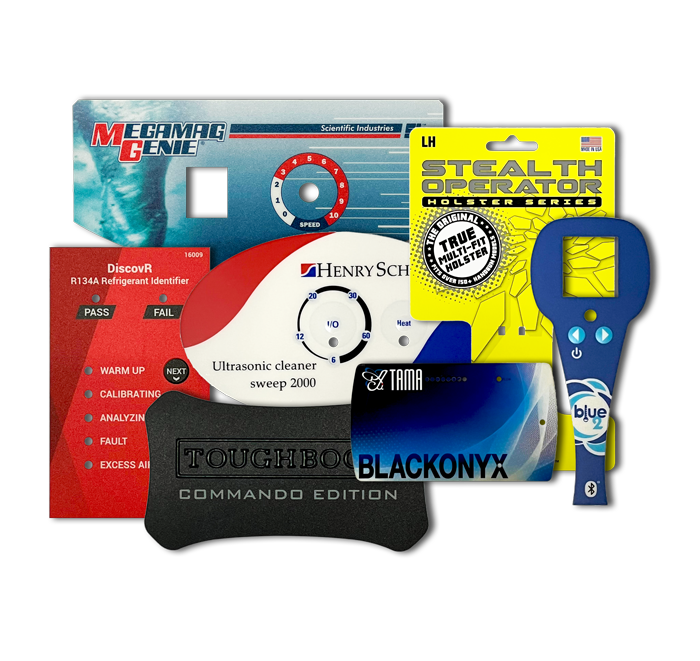The Comparison Between Standard and High-Durability Graphic Overlays
Wiki Article
Comprehending Just How Graphic Overlays Work to Improve Your Imaginative Tasks
Graphic overlays offer as a pivotal element in the realm of imaginative tasks, enhancing both aesthetic interaction and target market involvement. The effective integration of these overlays requires mindful factor to consider of style concepts and objectives.What Are Graphic Overlays?
Graphic overlays are aesthetic components that are put on top of a base picture or interface to enhance communication and user experience. They serve different objectives, including providing additional info, assisting user communication, and improving aesthetic charm. Usual applications of graphic overlays can be located in electronic interfaces, marketing, and academic products.
Graphic overlays are frequently created making use of layout software, enabling designers to adjust openness, shade, and size to achieve the preferred effect. They can be dynamic or fixed, with computer animations that draw the visitor's eye and improve engagement. The strategic use visuals overlays not only enhances visual power structure yet likewise help in supplying a clear and meaningful message. As such, recognizing exactly how to effectively apply visuals overlays is essential for designers aiming to raise their imaginative tasks.

Advantages of Making Use Of Graphic Overlays
Making use of visuals overlays can dramatically improve the effectiveness of visual communication throughout numerous tools. One of the primary advantages is the ability to share complicated details succinctly. By layering graphics, message, and pictures, overlays promote the presentation of information in a more digestible format, making it easier for target markets to understand essential principles rapidly.Additionally, graphic overlays can boost aesthetic allure, attracting focus to details elements within a layout. This is especially beneficial in marketing and advertising, where catching the viewer's passion is extremely important. The calculated usage of colors, shapes, and typography in overlays can create a cohesive and appealing aesthetic narrative, enhancing brand name acknowledgment.
Additionally, graphic overlays offer adaptability in layout. They allow designers to adapt web content for different platforms without starting from scrape, guaranteeing consistency throughout various channels. This flexibility is critical in today's electronic landscape, where web content must be optimized for varied tools and formats.
Kinds of Graphic Overlays
When taking into consideration the different kinds of graphic overlays, it is crucial to acknowledge their diverse applications throughout various sectors. Graphic overlays can be classified largely right into three kinds: useful, attractive, and informational.Functional overlays are made to boost the functionality of an item. Generally discovered in digital devices, these overlays typically supply tactile feedback with increased buttons or distinctive surfaces, enhancing browse around this web-site individual communication. They can likewise work as a safety layer, securing the underlying components from wear and tear.
Decorative overlays concentrate on aesthetic improvement, enabling brands to express their identity via vivid styles and customized graphics. These overlays are common in packaging, advertising, and point-of-sale products, where visual charm is important for attracting clients.
Educational overlays, on the other hand, are made use of to share important information or guidelines. They can be seen in applications such as signage, user manuals, and training graphics, where clarity and readability are vital.
Each kind of visuals overlay offers an one-of-a-kind function, adding to the total effectiveness of imaginative projects while resolving certain needs within numerous sectors. Understanding these differences is essential for picking the ideal overlay for your task.
Finest Practices for Execution
To ensure the successful application of visuals overlays, it is essential to develop a clear understanding of the task's objectives and the particular needs of the end-users. Begin by performing thorough study to determine the target audience and their choices, as this will certainly notify style choices and performance.
Next, develop an in-depth strategy that lays out the overlay's objective, layout, and assimilation process. This strategy should include interface factors to consider, ensuring that the original source overlays improve instead than obstruct the individual experience - Graphic Overlays. Consider the aesthetic power structure and preserve consistency in layout aspects, such as color typefaces, symbols, and schemes, to promote brand name coherence
Evaluating is crucial; gather responses from a depictive sample of individuals to determine potential concerns and locations for enhancement. Iterate on the layout based upon customer input and efficiency information. In addition, make certain compatibility across various gadgets and systems to make the most of ease of access.
Tools for Developing Overlays
Producing reliable graphic overlays requires the right devices to convert design ideas into useful applications. Numerous software and platforms are available, each tailored to details needs and skill degrees.Adobe Photoshop and Illustrator are sector criteria, providing comprehensive capabilities for producing and controling overlays. These tools give advanced functions such as layer management, mixing settings, and vector graphics, enabling designers to produce complex and top notch overlays.
For those looking for a much more easy to use approach, Canva and Figma are exceptional choices (Graphic Overlays). Canva's instinctive user interface allows customers to develop overlays quickly using pre-designed themes, while Figma assists in joint layout in real-time, making it perfect for description teams
Furthermore, open-source alternatives like GIMP and Inkscape offer robust functionalities without the connected expenses of exclusive software program. These devices permit adaptability in style and can suit different documents layouts, ensuring compatibility throughout different platforms.

Conclusion
To conclude, visuals overlays work as powerful tools for enhancing creative projects by providing aesthetic clarity, aesthetic charm, and brand name uniformity. Their varied applications, ranging from practical to decorative, emphasize their flexibility in interaction. Sticking to best practices and utilizing appropriate devices makes certain reliable implementation and maximizes the effect of overlays. By comprehending the basic principles and benefits related to visuals overlays, designers can dramatically boost the top quality and efficiency of their visual interactions.Graphic overlays offer as a pivotal part in the realm of creative projects, boosting both visual interaction and audience involvement.Graphic overlays are typically developed utilizing layout software application, enabling designers to control shade, dimension, and openness to attain the desired result.Moreover, graphic overlays can increase visual allure, drawing attention to certain aspects within a style.Furthermore, graphic overlays offer flexibility in design.In final thought, graphic overlays serve as effective devices for enhancing innovative jobs by offering aesthetic clarity, visual appeal, and brand name consistency.
Report this wiki page